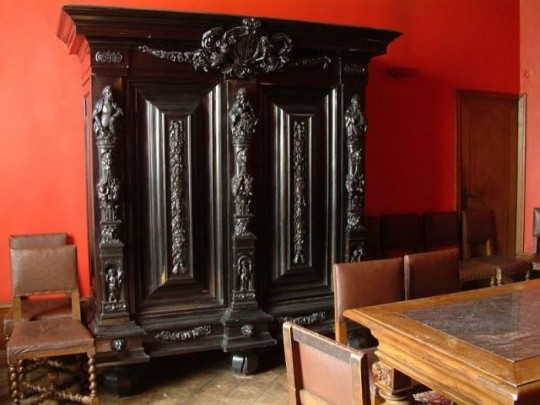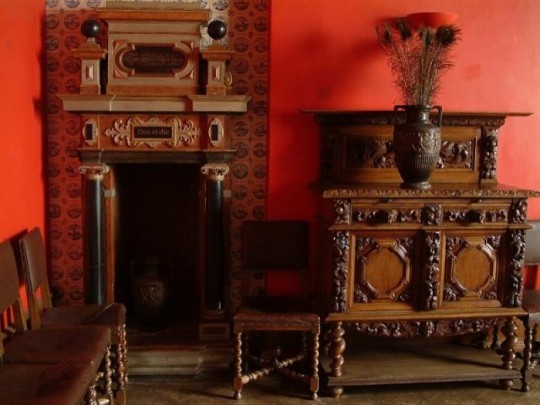It was around 1914 that the artifacts were moved to the Town Hall from the chapel of the house at Podwale Staromiejskie. To incorporate the floor and ceiling—made indeed for another interior—into the new location, the office was slightly modified by thickening its walls and cutting off one of the corners. This created the impression that the décor was specifically designed for this room.
The low wainscoting that adorns the walls, the so-called window benches, and the polychrome stone fireplace made of sandstone, decorated with elements of polished black marble, also originate from the chapel.
The aforementioned artifacts are dated to the year 1642, and it is likely that the ceiling, which constitutes the most impressive part of the office's furnishings, was also created around this time. It consists of nine paintings forming a Passion cycle. The central scene depicts the Last Supper, and in addition, one can see the following paintings: Christ before Pilate, Christ before Annas, Christ before Caiaphas, the Fall with the Cross, the Resurrection, the Entombment, the Crucifixion, and the Crowning with Thorns. These works, although they do not represent the highest level of painterly craftsmanship, are nevertheless an interesting example of how a local, spirited master made use of the achievements of such great artists as Rubens or Rembrandt.
The decor is completed by excellent nineteenth and twentieth-century copies of Baroque Gdańsk furniture, as well as the original color scheme of this interior.


